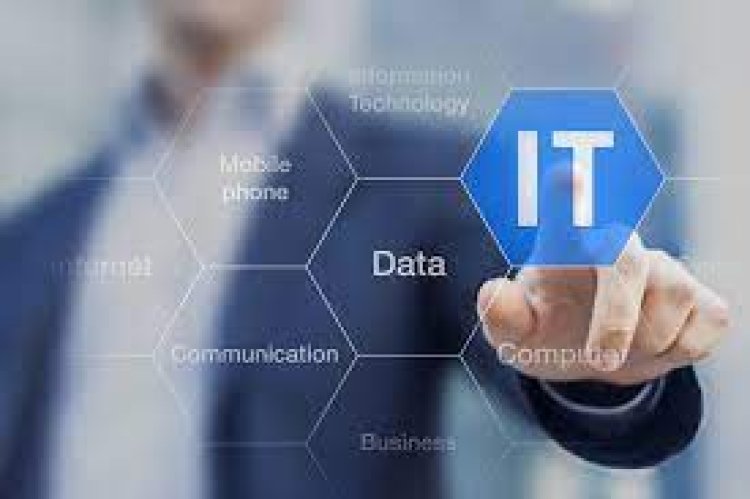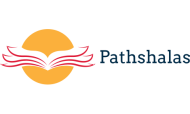Informaion Technology
To produce, process, store, secure, and exchange any and all electronic data, IT makes use of computers, storage, networking, and other physical equipment, infrastructure, and processes.

What is Information Technology? Types, Services, Benefits
The field of information technology is responsible for the management and processing of information for large-scale corporations or organisations. The phrase "information technology" has now come to mean any and all forms of digital communications and technologies. Information technology encompasses every aspect of modern life, from communicating via email and applications installed on computers to collaborating with coworkers via zoom calls. Even seemingly unrelated activities, such as analysing consumer data or live streaming social media, play an important part in information technology.
With the assistance of today's advanced technologies, you have access to a dizzying array of opportunities. It is an essential component of the work that we do on a daily basis. One's professional standing can be improved in a number of ways by utilising information technology in various capacities. If you are seeking for a course that is both practical and the best available in the field of information technology, you should choose IT Professional training. You will gain an in-depth understanding of what information technology is, as well as the potential applications and advantages of IT, which will undoubtedly be of great use to you in terms of advancing your professional career.
What is Information Technology?
Accessing information may be accomplished through the use of various computer-based systems or devices. It is a synthesis of both technological advancement and informational advancement. This system is accountable for a significant amount of any workforce, business operation, and other personal access information that constitutes an individual's day-to-day activities. It has a significant effect on our lives on a daily basis.
Every company makes use of this standard piece of technology in order to improve their managerial abilities. It is possible to make use of this for either one's own personal or professional needs. The majority of multinational corporations are moving in the direction of implementing information technology in order to better manage and innovate their data. A further excellent illustration of the use of information technology can be seen in the practise of vendors at flea markets collecting payments from street performers by adding their Venmo identities to smartphone credit card readers. Making use of information technology would look something like this: you keep track of your monthly spending by utilising a spreadsheet.
What is the Role of Information Technology?

Following a knowledge of what information technology is, the next step is to comprehend the function of information technology. The function of information technology is extremely broad, and it serves as a cornerstone for the workforce of any organisation at any given time. The use of information technology in all aspects of an organisation, from communications to data administration, is an essential factor in achieving maximum efficiency.
During the past three to four decades, examples of information technology have gained great prominence and have transitioned from primary tasks of bookkeeping and analogue communications to a heavily digital business environment. This movement has resulted in a transition from an analogue business environment to a heavily digital business environment. As a consequence of the fact that all business communication in the modern era takes place with the assistance of the internet, a significant portion of company information is comprised of digital data. The function of information technology and related services is to defend the integrity of this data, cut down on errors, and defend the system against any kind of assault.
Why Do We Need Information Technology?
The application of information technology is critical to the improvement of both our professional and personal life. It is the zenith of the firm's foundation, which is comprised of communication, technology, innovations, seamless sustainability, and other essential components that allow the company attain its maximum potential. Playing games, sharing media content, buying online, and of course, simply being sociable are all examples of ways in which information technology may be used on a personal level to interact with and communicate with other people. When thinking about a future in business and commerce, a job in information technology is the pinnacle of professional development. It is accountable for the running of businesses throughout all different fields. The information technology industry has established its preeminence in every sector, from medical care to the food service industry, as well as manufacturing and retail. People rely on information technology to connect with one another, manage information and services, and achieve the highest possible level of efficiency.
What Are Information Technology Services?
The following are some good illustrations of various services associated with information technology that can be comprehended with the assistance of the presented illustrations.
- A network is defined as the collection of two or more computers that are connected to one another wirelessly or by cable.
- Compute: The process of computing, also known as data processing, is an essential part of information technology. It is useful for storing the data in the central processing unit.
- Data storage refers to the act of placing information in a secure location so that it is not immediately put through any processing. This drive includes several storage solutions, such as solid-state drives and databases that are stored in the cloud.
- Security: Cyber security enables organisations to secure their data and other technology assets from being accessed in an unauthorised manner. This helps institutions save money.
- The purpose of technical support is to resolve problems with either the hardware or the software. In most cases, providing technical support involves doing things like unlocking a laptop or resolving issues with network usage.
Types of Information Technology
In this section, we will go over the many categories of information technology. They are as follows:
1. Computing
The field of computing is well-known for being goal-oriented and necessitates the construction of computer hardware. It involves not only researching and experimenting with algorithm processing, but also the creation of both hardware and software. The field of computing covers a wide range of social considerations in addition to scientific and engineering ones.
2. Software
The software consists of a collection of instructions, data, and programmes that allow the computer to function properly and carry out the desired activities. It is the antithesis of hardware, which generally refers to the physical aspects of the computer. Software describes the mental aspects of the computer.
3. Platforms
The platform is a combination of software and hardware architectures working together. It is a basis on which additional applications, processes, and technologies that have been established can be built. The majority of the processing for various software programmes takes place here.
4. Networks
Computer networks are primarily concerned with the act of connecting various computing devices and facilitating the sharing of information and resources among such devices. For the purpose of information transmission through physical and other wireless technologies, these networks make use of a complete set of rules that are referred to as communication protocols.
5. APIs
Application Programming Interface is what API stands for when it's written out in its entire form. It pertains to any piece of software that performs a specific purpose. In this sense, the interface between the two programmes can be thought of as a contract for the provision of services. This outlines the manner in which the networks will communicate with one another by utilising requests and responses.
6. Data
A piece of information that has been converted into a form that can be moved or processed quickly and easily is called data. Data has a vital role in the process of being translated into a binary digital form, which is important when considering the translation medium of today. Both singular and plural uses of the term "data" are acceptable when referring to this concept.
7. Databases
A database is an organised collection of structured data or information that is saved electronically in a computer system. Databases can also store unstructured data or information. The Database Management System (DBMS) is the one in charge of looking after it.
8. Data Synchronization
A sort of embedded middleware known as data synchronisation makes it possible for a programme to simultaneously update data on more than one system. This contributes to making the data set consistent. These services could be operated on any one of a number of different transportation mechanisms, the one and only requirement for which will normally be some application-specific knowledge or concept of the data that needs to be synchronised.
9. Data Storage
This involves storing information by utilising technologically particular forms of information technology that have been produced over time and making the information accessible if the system so determines. The term "data storage" refers to the act of recording data onto a medium and subsequently retaining that data through the use of a computer or other devices.
10. Analytics
In several areas of business intelligence and applications that are related to these endeavours, analytics serves as a catch-all phrase for a range of diverse uses. Website analytics refers to the process of analysing information with the assistance of a specific domain and is an essential component of information technology.
11. Content Delivery
The act of delivering content is a subset of content distribution as well as content delivery and content caching. When a page is requested, this service copies the pages to a website and distributes them geographically among multiple servers. As a result, it may dynamically determine which server is the nearest to the user and provide the page content from that server.
12. Content Management
In order to facilitate marketers and their proxies, content management relies on a collection of templates, protocols, and a standardised software structure. Alongside the video, web landing sites, blogs, and document repositories can now develop and manage text, graphics, picture, and audio content with the assistance of these proxies.
13. Monitoring
The process of gathering metrics relating the IT operations with the environment's hardware and software to guarantee that every function is performed as intended to support apps and other services is known as the metrics collection process.
14. Event Processing
These computations carry out actions on events as they are being reported by systems that detect or listen to environment-based events. These computations are known as event processing. Reading, making, and modifying are all excellent examples of event processing.
15. Process Automation
The design of software and operating systems to take the place of any manual processes that can be repeated is the focus of this IT automation. This is also to blame for the decrease in the amount of manual involvement. Because of this, the delivery of information technology infrastructure and applications can be sped up because traditionally labor-intensive manual activities can now be performed automatically and without the need for human intervention.
16. Transaction Processing
Transaction processing is a well-known processing technique that is often carried out by a large server consisting of multiple computers that facilitate interactive application. Work in transaction processing is broken down into separate, indivisible activities, along with a variety of different transaction approaches.
17. Artificial intelligence
This is a simulation of human intelligence that is processed by machines, most specifically in reference to computer systems. Expert systems, natural language processing, speech recognition, and machine vision are some of the specialised applications of artificial intelligence.
18. Cloud computing
Cloud computing, or "computing in the cloud" for short, refers to a way of providing computing services. This encompasses server storage in addition to database management systems, networking software, and intelligence and analytics. The result is increased speed of innovation, as well as flexible resources and economies of scale.
19. Communications
Communications are an extremely important part of the field of information technology. It is a catch-all term that refers to any item that can be used for communication, including but not limited to televisions, cellular phones, computer and network hardware, satellite systems, and a great many more. In addition to this, it incorporates the various other services that are connected to these applications in general.
20. Cybersecurity
Systems that are connected to the internet and contain both hardware and software need to have some form of cyber security in place to protect them from potential cyber threats. Therefore, individuals and other businesses utilise the practise to secure themselves against unauthorised access to data centres and other computerised systems, and they do so by using encryption.
21. Infrastructure
The term "infrastructure" refers to the systems of hardware and software that enable software components to support the delivery of business systems with the assistance of any IT-enabled procedures. Infrastructures are commonly used to support the delivery of business systems.
22. Internet of Things
The Internet of Things, also known as IoT, refers to the network of interconnected devices as a whole as well as the technology that enables efficient two-way communication between those devices and the cloud.
23. Machine Learning
This subfield of computer science and artificial intelligence focuses on improving accuracy by modelling human learning behaviour through the application of data and other algorithmic techniques.
24. Maintenance and Repair
This assures that the product will continue to perform a certain function over its entire operational life cycle and also ensures that it will be sustainable. The IT specialist is able to handle the items with the utmost care and ensure that their security is maintained as a result of this.
25. Robotics
This function is produced by a plethora of different programming and algorithmic combinations, and it is controlled remotely by manipulators and actuators by means of a control system that enables action, processing, and perception by means of real-time sensors. The objective of robotics is to build machines that will facilitate human life and make it more convenient.
26. Software/Application Development
This approach of development assists in the creation of a computer programme that is comprised of a set of other programmes to carry out a variety of activities that an organisation could want. Application business helps automate operations and increase efficiency in any way possible, from the scheduling of any sales report to the calculation of any monthly expenses, starting with the scheduling of any sales report.
What Does Information Technology Do In Business?
The application of information and communications technology (ICT) can confer a great number of benefits on a company. It contributes to the development of people's ability to communicate with one another, which in turn contributes to the growth of enterprises. The application of information technology in business helps ensure the confidentiality of the company's data and other crucial information. They are also helpful in the establishment of management databases equipped with CRMs and other tools to tackle any front-operational issues that may arise. This helps raise efficiency while also improving the speed and convenience of the company's operations. In any type of commercial setting, the Information Technology department is responsible for the following three primary areas:
- Hardware and Infrastructure Information Technology This division of the company is largely concerned with the operational capabilities of the digital infrastructure.
- Governance of information technology (IT governance) is the process through which an organisation establishes its policies and norms, with the goal of maximising efficiency in all aspects of its operations. This, however, must take place in a manner that is appropriate and in line with the norms and regulations of the government.
- IT Operations: This focuses on the functionality of IT operations and digital infrastructure on a day-to-day basis.
Benefits of IT in Business
The information technology industry offers a myriad of advantages and perks. They contribute to the process of creating communications and selecting efficient strategies to assist the firm develop. Listed below are a few suggestions that can help improve your IT company's business.
1. Productivity
The application of information technology in corporate settings contributes to increased levels of productivity within those settings. This helps in efficiently analysing the data without the need for any human touch, which in turn helps to keep the working balance in the IT sectors stable.
2. Security
Everything is now, with the assistance of increased global connectedness, in the very first of our hands. People who work in information technology give the security functions in the field of information technology (IT) a lot of attention in order to guarantee the safety of databases.
3. Communication
The infrastructure of communication is an essential part of information technology and the services it provides. Establishing a solid relationship between the product handler and the company assists in determining operational efficiency and resource utilisation. This helps when identifying operational efficiency and resource utilisation.
4. Online Recruitment
In the sphere of information technology, one of the most important roles is played by online recruitment. It is common practise to characterise recruiting technology as including the processes of candidate sourcing, screening, and evaluation. The development of information technology has made this much simpler, and technological recruitment makes it possible to locate high-caliber technical talent with the assistance of a sourcing pipeline that is tailored to the needs of the organisation.
5. Access to Information
This makes it possible to acquire massive amounts of information at a more manageable speed, with the assistance of hardware and software networks and workstations, and at a lower cost overall. It is a collection of technologies that allows for the integration and structuring of data in order to create uniquely new information that assists in making decisions more quickly.
6. Better Decision-Making
The combination of information and technology opens the door to the processing of massive volumes of data, which in turn enables your company to reach its full potential for expansion. The accuracy of the decisions that will be made in the interest of the company cannot be compromised in any way. The processing of customer data is simplified with the assistance of various cutting-edge techniques, such as data analytics and data mining, and superior computerised judgements can be derived from the information obtained from these sources.
7. Sustainability
They typically inquire as to whether or if information and communication technologies (ICTs) help to preserving and protecting society from confronting any harm, so enabling future generations to enjoy a life that is fulfilling.
Conclusion
As a result, by the time we've reached the conclusion, we have a deeper comprehension of what constitutes information technology. The modern technological industry is dependent on information technology as its primary support system. This assists us in determining how to ensure the success of our company. It also assists us in making educated decisions on the myriad ways in which the advantages of technology might be utilised. It helps to back up data in a smooth manner and creates a platform that is sustainable for storing and backing up data. KnowledgeHut's IT professional training can be of assistance to you if you wish to get an accurate comprehension of what information technology is and the role it plays in the advancement of society. You will receive a thorough grasp of the various processes that are involved in information technology, and you will hear from industry experts about the overall performance of information technology. I recommend that you look at their website right now.












